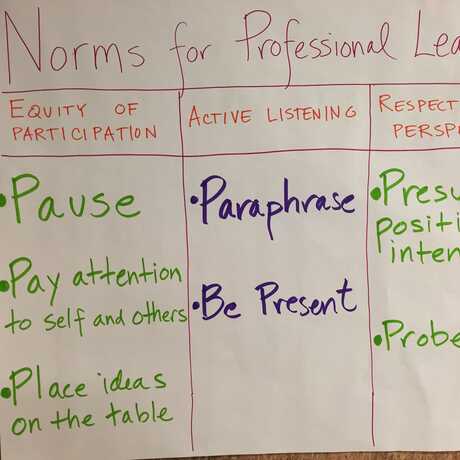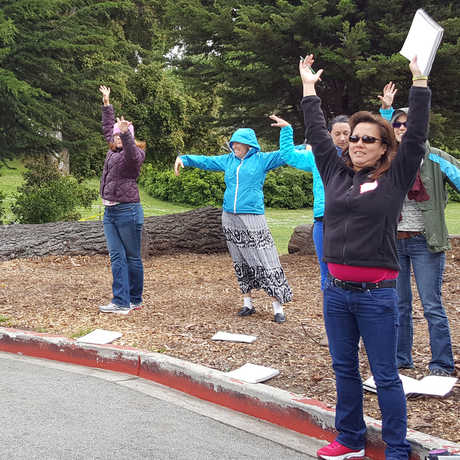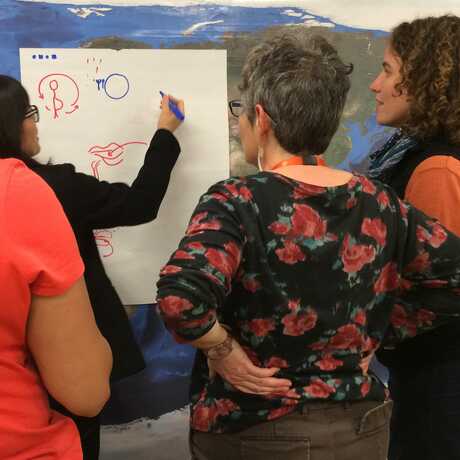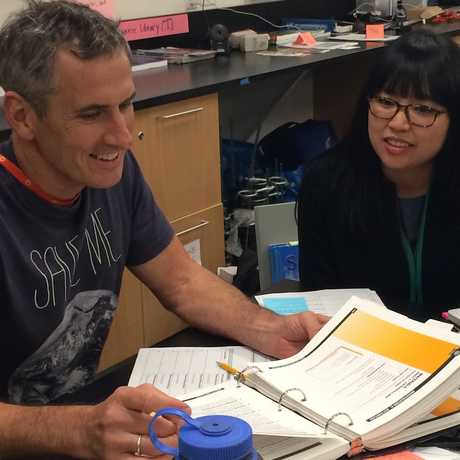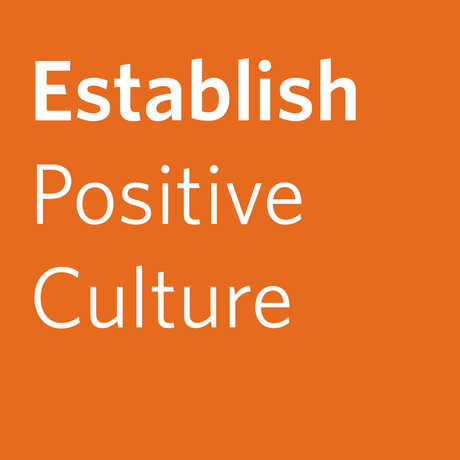
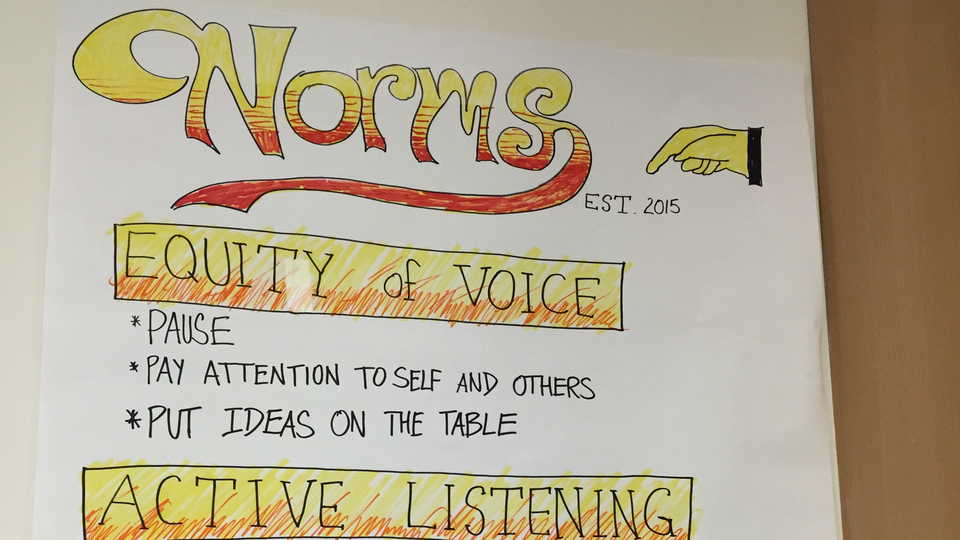
Norms are a “social contract” that supports a group’s collaborative work. In this article, learn more how and why to use norms to support trust and risk taking, two important aspects of productive collaborative work.
What are norms?
Have you ever been in a meeting or a workshop and felt frustrated by not being able to get a word in? Have you noticed colleagues hanging back from participating and made assumptions about why? Have you ever felt attacked by criticism instead of supported by constructive feedback? Providing or co-creating norms for collaborative work of any kind (e.g., professional learning, meetings, planning) can help participants avoid these pitfalls, and instead support behaviors that increase learning and productivity.
In collaborative situations it’s helpful to explicitly define and agree on a set of norms to guide how the group works. The word “norm” generally refers to something that is usual, typical, standard, or expected. In the context of teamwork and collaboration, norms are agreed-upon definitions of productive behaviors and mindsets that should be usual, or “the norm,” whenever a group is working together. Norms are a “social contract” that supports a group’s collaborative work.
Norms that are explicit and visible to the entire group can provide a framework for addressing behavior that might be distracting from the goals of the group. The facilitator can easily reference the norms and ask “How are we doing?” or “Let’s remind ourselves of our norms…”
Why do norms matter?
Having a clear set of norms for professional learning can build trust among participants by making sure that everyone feels that they will be heard, that attention is paid to inclusive behavior, and that there is space and time for questions and contributions from all participants. In professional development for teachers, attending to norms also mirrors the type of conscious self-management that teachers hope to develop in their students.
Learning collaboratively with others can open participants up to possible judgment or discomfort, especially when taking on the role of a learner (check out the materials in From Teacher Mode to Learner Mode). Not knowing the right answer can cause participants to feel vulnerable. However, this is the situation we put our students in when we encourage inquiry and problem solving in our classrooms, so it’s important that teachers experience it as well.
Norms can build capacity for taking risks as a learner by:
- Encouraging reflection on one’s own understanding as well as on the ideas of others
- Encouraging productive communication among group members
- Defining a common ground for communication, regardless of the diversity of the group
Below are some examples of norms, or behaviors, that a group might agree on in order to build trust and be willing to take risks.
How can norms build trust?
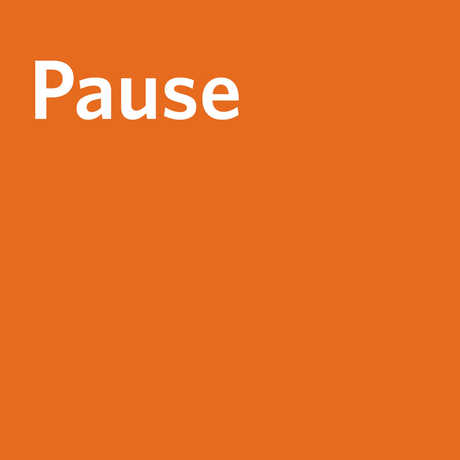
While some people process information and figure things out quickly or by talking things out with others, that isn’t true for everyone. Giving the group time to think before starting to discuss a topic makes the discussion more inclusive. And pausing leaves an open space in a conversation that invites contributions from participants who may not be heard from as often.
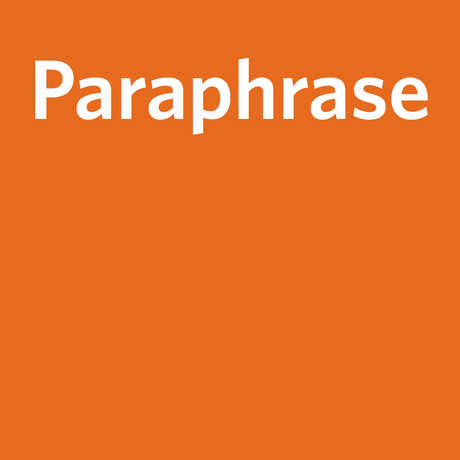
Using phrases like “So are you saying…?” and “I think I heard... is that right?” indicates a want to understand others’ ideas and avoid assumptions. It also encourages participants not to simply dismiss ideas due to lack of understanding.
How can norms build capacity for taking risks?
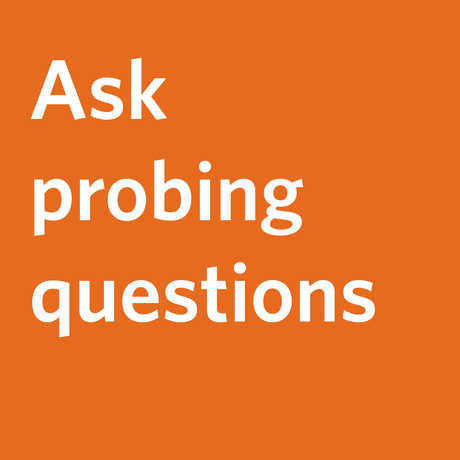
By asking “Please say more about…” or “I’m curious about…” participants indicate that they value others’ ideas. This is also beneficial to the person “probing” for more information, since they need to pay close attention to what others are saying in order to be curious enough to ask a probing question.
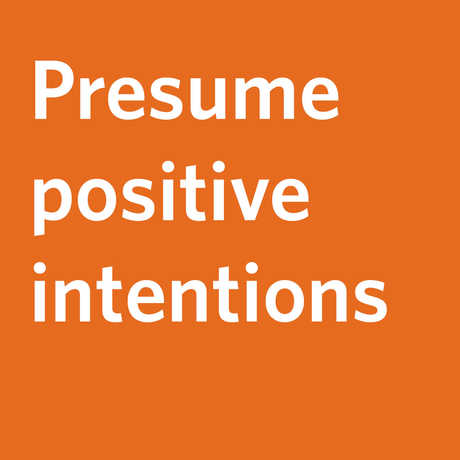
When there is disagreement within a group, whether about how we understand a concept or what to do next, presuming positive intentions can be difficult. Remembering to disagree with the idea, rather than the person can support this, as can asking questions to better understand others’ intentions: “Tell me more about your thinking…” or “What ideas do you have about how we can improve?”
References
Garmston, R. J., & Wellman, B. M. (2013). The adaptive school: a sourcebook for developing collaborative groups (2nd ed.). Lanham, MA: Rowman & Littlefield Inc.
Loucks-Horsley, S., Stiles, K.E., Mundry, S., Love, N., & Hewson, P.W. (2010). Designing Professional Development for Teachers of Science and Mathematics (3rd ed.). Thousand Oaks, CA: Corwin, A SAGE company.
Norm [Def. 1]. (n.d.). In Oxford Living Dictionaries, Retrieved July 18, 2017, from https://en.oxforddictionaries.com/definition/norm.

